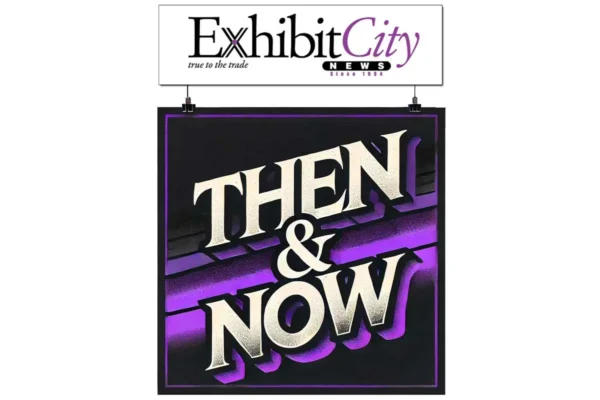When you envision a “great designer,” you might picture someone flanked by super models, dressed head to toe in black, wearing sunglasses while flashes pop off around them. Does this sound like anyone you know? Me neither. Realistically, the majority of exhibit designers driving the creative solutions of our industry are grinding it out in relative anonymity.
dressed head to toe in black, wearing sunglasses while flashes pop off around them. Does this sound like anyone you know? Me neither. Realistically, the majority of exhibit designers driving the creative solutions of our industry are grinding it out in relative anonymity.
If you ask around “What makes a great designer?” your answer will vary depending on whom you ask. While this debate makes for great conversation, let’s explore what makes a great designer for the purpose of working with or hiring. Like any profession, the attributes of the successful are elusive, but there are a few common threads among great designers.
Education:
Education seems like a fair starting point. Unlike a lot of other professions, the university attended is not necessarily the best indicator of how good a designer will be. Most exhibit designers will have some kind of degree. Industrial design, architecture, or theatrical design all produce great designers due to their well-rounded 3D-orientated design curriculum.
However, when it comes to creative types, you can’t rule out a designer who never got their degree. On the flip side, someone with a Master’s does not necessarily mean they are more creative or experienced.
Personality:
Childhood: Most designers grew up as creative young artists and have probably been working through their creative appetite most of their life. Sketches, doodles, crafts, crayons, Play-Doh or Legos, you name it, they were into it. As they grew older, they began to channel their creativity into what they admired most.
Good listeners: Great designers learn to listen, because unlike talent, they are rarely born with it. In time, great designers learn to listen and identify with their clients’ needs without letting their personal opinions get in the way.
Drive: This is one of the most underrated designer attributes. There is no “good enough for now” just because it is 5 o’clock. Great designers lose themselves to their creative exploration, unless, of course, they are thirsty, because there is always time for beer.
Pride: Similar to drive, pride is their internal gut check that motivates them to do better. It is the voice that pushes them through every project and does not let up until they can step back from their work and say, “that’s sweet.”
Organized: This is one of the most defining attributes that separate an “artist” from a “designer” because their ability to organize touches so many aspects of the design process and their ability to execute a project from start to finish.
Brainstorming: Most great designers want to work with other great designers, because designing alone is the creative equivalent of working in a vacuum. Whereas working as a team has quite the opposite effect and creative solutions seem to appear out of thin air.
Portfolio:
A designer’s portfolio is one of the best insights into their creativity and experience. Years of creative solutions and project depth can be summed up in a nicely bound collection of hand sketches, computer renderings and show photos.
Seems pretty simple, right? Not exactly.
When reviewing a designer’s portfolio, the key is to peel back the layers of their portfolio content and determine what they actually “created.” Ask questions about their process and execution. Also consider the quality of their work as a whole. Most of all, don’t fall into the “they have potential” trap. If they have difficulty coming up with ideas, they are unlikely to improve with time. A great designer’s only struggle will be narrowing down which designs to show in their portfolio.
The X-Factor:
Talent: Great designers have it. In life, there are a lot of things you can learn. Being “talented” is not one of them. A designer can learn to channel their creativity, be better listeners, organize their thoughts, manage their time and focus their ideas, but they cannot learn to be more talented.
Visual sponges: Great designers are rarely stimulated by one discipline alone and are constantly absorbing other types of design. Great designers are admirers of all things creative and they absorb anything that catches their eye.
Gift for the gab: Some designers pick it up in school while others hone their skills professionally. It’s the ability that comes with explaining your ideas.
Horrible spellers: A common thread among some creative designers I have seen is they are horrible spellers. I’m not sure if creative types spell by visual shape as opposed to the letter sequence, but we’ve seen it enough to know it could be the sign of a great designer.
Design process: Pen, sketch pad or computer rendering are all tools of the trade. While some designers want to jump straight into the computer, great designers seem more likely to explore their design “on paper” first. However brief, this doodling or sketching encourages loose creative exploration to flow before the issue or concern of the “how” comes into the equation.
The Complete Package:
Most designers grind out an existence in relative anonymity with their success acknowledged by a desk that can actually see a window.
Good designers must understand, identify, organize and execute their client’s goals. Great designers achieve those goals and make it look easy.
Great designers are the complete package: Personality, portfolio, talent and some kind of x-factor. They manage to pull a creative three-ring circus of information and ideas together under pressure and within a finite time frame.
What makes them great is they do all that by Tuesday afternoon. And without a news conference or press release, they will get up and do it all over again tomorrow.
That’s not just great. That’s amazing.
David Linderman is Design Partner and co-owner of Core Design Group, based in the West Suburbs of Chicago. As an independent freelance design firm in business for almost 10 years, Core Design provides its clients with a reliable and confidential design source specializing in trade show exhibit, corporate environment, and retail design. You can visit them online at www.coredesigngroup.net or contact Dave directly at dlinderman@coredesigngroup.net
| Home |
| People on the Move |
| National News |
| International News |
| Opinions |
| Tradeshow Calendar |





























